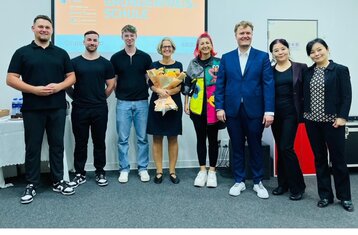
HFU Business School visits German Shanghai Hongqiao School
HFU Students introduce our programmes in Shanghai
Besides this current news, you can also find out what's going on at Furtwangen University in our HFU newsletters: To our newsletters.
If you'd like us to let you know as soon as a new newsletter is published, please email Email application is started:presse(at)hfu.eu to sign up for the newsletter.
In September 2023 Furtwangen University was the victim of a cyber attack. Click here for Internal link opens in the same window:information on data protection law regarding the cyber attack.